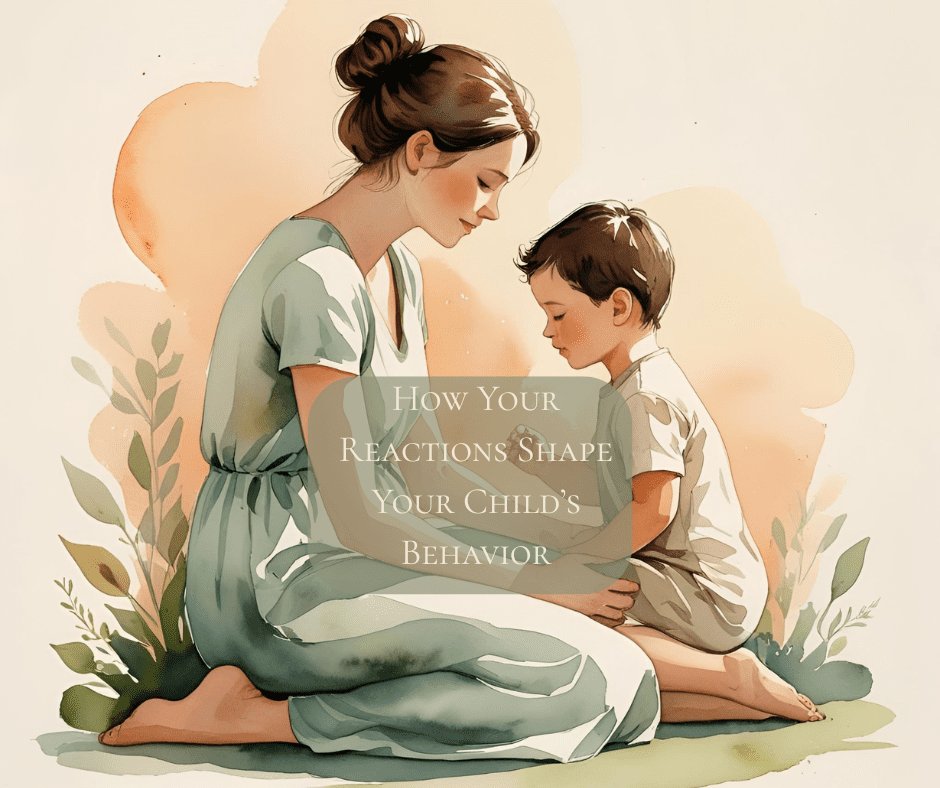The Unfiltered Truth About Parenting
Parenting is a master class in emotional regulation. And let’s be honest: most of us are failing the final exam.
You start the day with good intentions. Coffee in hand. A fresh sense of resolve.
But then the crayons scribbled on your wooden front door. The toddler won’t put on pants. The sibling screaming match hits decibels reserved for dogs. And somewhere between the spilled milk and the 14th “Maamaa,” something in you snaps.
You yell.
You slam the cabinet.
You throw out a sarcastic “Seriously?!” to a four-year-old.
And then comes the gut-punch of guilt. You wonder how you got here—again. And if you’re anything like I was as a first-time mom, you’re probably putting impossible pressure on yourself to get it all just right.
👉 That’s actually why I wrote this post on why having three kids has felt easier than one—because the truth is, I’ve grown more than they have.
And this is how I started Forged by Grace.
Who’s Really the One Losing It?
Here’s the kicker: we expect toddlers to stay calm under stress while we, the adults, routinely lose our grip.
And we’re not alone. Research shows that parental emotional regulation is one of the strongest predictors of child behavior outcomes.
When we’re dysregulated—yelling, reacting impulsively, shutting down—we’re not just having a bad moment. We’re wiring their brains for how to respond to stress, frustration, and relationship dynamics.
“But They Just Push My Buttons!”
Yep. Because you have buttons.
And your kids didn’t install them—they just found them.
Your triggers usually come from unmet needs, past experiences, and internalized beliefs. Kids don’t cause our reactions; they expose where healing and self-awareness are still needed.
What the Research Actually Says
- Mirror Neurons: Kids’ brains are literally wired to mirror the emotional states of their caregivers.
- Attachment Theory: Secure attachment isn’t built through perfection—it’s built through connection and consistent repair.
- Co-Regulation Comes First: A dysregulated parent cannot regulate a child. It has to start with us.
Your nervous system sets the tone. Your child borrows their calm from you before they learn to create their own.
👉 I dive deeper into this idea in my post “Borrowing Calm: The Real Secret to Toddler Meltdowns”—and why your composure is often the turning point in your child’s behavior.
So… How Do We Stop Screaming Into the Void?
1. Check Yourself First
Before correcting your child, ask: What’s going on in me?
- Am I hungry? Touched out? Overstimulated?
- Did I sleep?
- Am I reacting to this child or to a deeper wound?
Awareness is everything.
2. Have a Regulation Plan (Yes, For You)
You make calm-down corners for them. What about you?
- Create a reset ritual: step outside, drink cold water, deep breathe in the bathroom.
- Use mantras like: “I’m the safe one. I go first.”
- Practice pauses: 5 seconds of silence before responding.
3. Repair is More Important Than Perfection
You will lose your cool. What matters most is what you do next.
- “I yelled. I shouldn’t have. I was overwhelmed and I’m sorry.”
- Show them how to take ownership and reconnect.
4. Strengthen the Foundation Daily
Build emotional margin into your life:
- Go to bed earlier.
- Eat foods that stabilize your mood.
- Say no to non-essentials.
- Schedule your own sensory breaks.
You can’t pour from an empty nervous system.
5. Lead with Firmness AND Compassion
Being regulated doesn’t mean being permissive. You can hold boundaries without boiling over.
- “I won’t let you hit. Let’s take a break together.”
- “This behavior isn’t okay. I’m here to help you through it.”
👉For more on toddler hitting check out Why Your Toddler Hits the Baby
The Legacy You’re Leaving
You’re not just parenting for today. You’re shaping their emotional blueprint for tomorrow.
They will remember how you responded when things were hard.
They will absorb how you spoke to them in their worst moments.
They will learn to speak to themselves the same way.
So the next time you feel your volume rising or your patience cracking—pause.
Ask: Am I modeling the behavior I want them to learn?
This is the hard stuff. But it’s the good stuff.
You don’t have to be perfect.
Just present.
Just willing.
Just human.
And maybe the next time your kid acts out—you won’t.
Want practical tools to help regulate your own emotions in the heat of the moment? Join the waitlist for a 1:1 Calm Session…………….. Click Here
Want to Read More?
If you’re curious about the research behind this blog, here are some of the sources that informed it:
- Dr. Dan Siegel & Dr. Tina Payne Bryson – The Whole-Brain Child
Insight into how a child’s brain develops and how parents can nurture emotional regulation through connection. - Dr. Stuart Shanker – Self-Reg
Breaks down how stress affects behavior and how both kids and adults can develop stronger regulation skills. - L.R. Knost – Two Thousand Kisses a Day
A gentle parenting voice on why connection—not control—is the key to shaping behavior and emotional health. - Harvard University Center on the Developing Child – developingchild.harvard.edu
Explains the science of “serve and return,” mirror neurons, and the long-term impact of caregiver responses on brain development. - Dr. Bruce Perry & Maia Szalavitz – The Boy Who Was Raised as a Dog
Shares the deep neurological impact of emotional environments on developing children. - Dr. John Gottman – Raising an Emotionally Intelligent Child
A practical guide to emotion coaching and why parental self-regulation shapes kids’ ability to thrive socially and emotionally.

View comments
+ Leave a comment